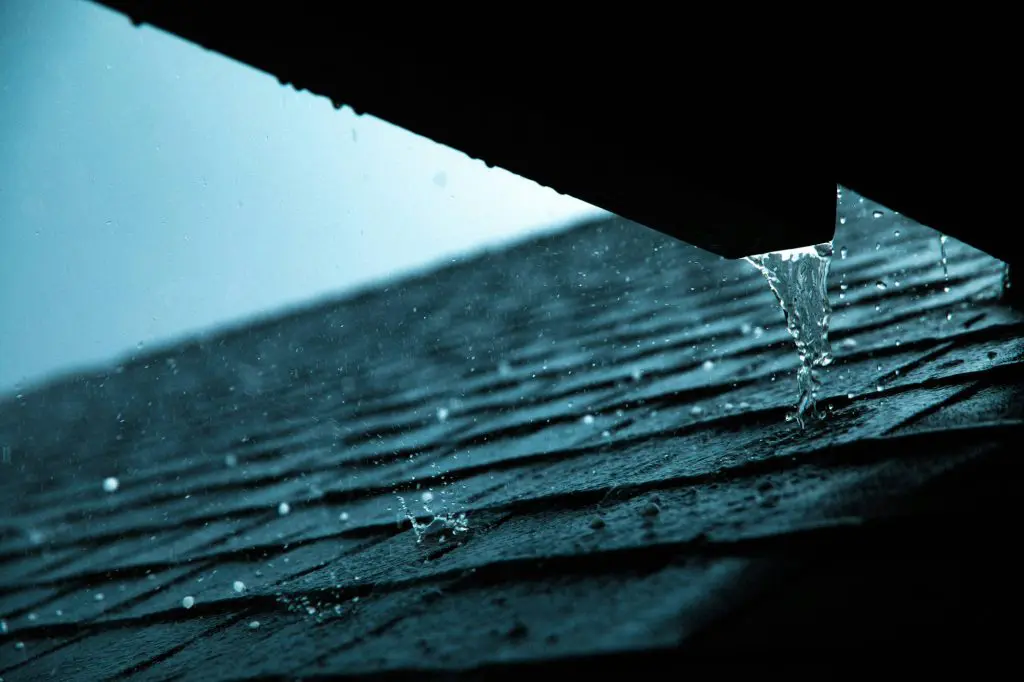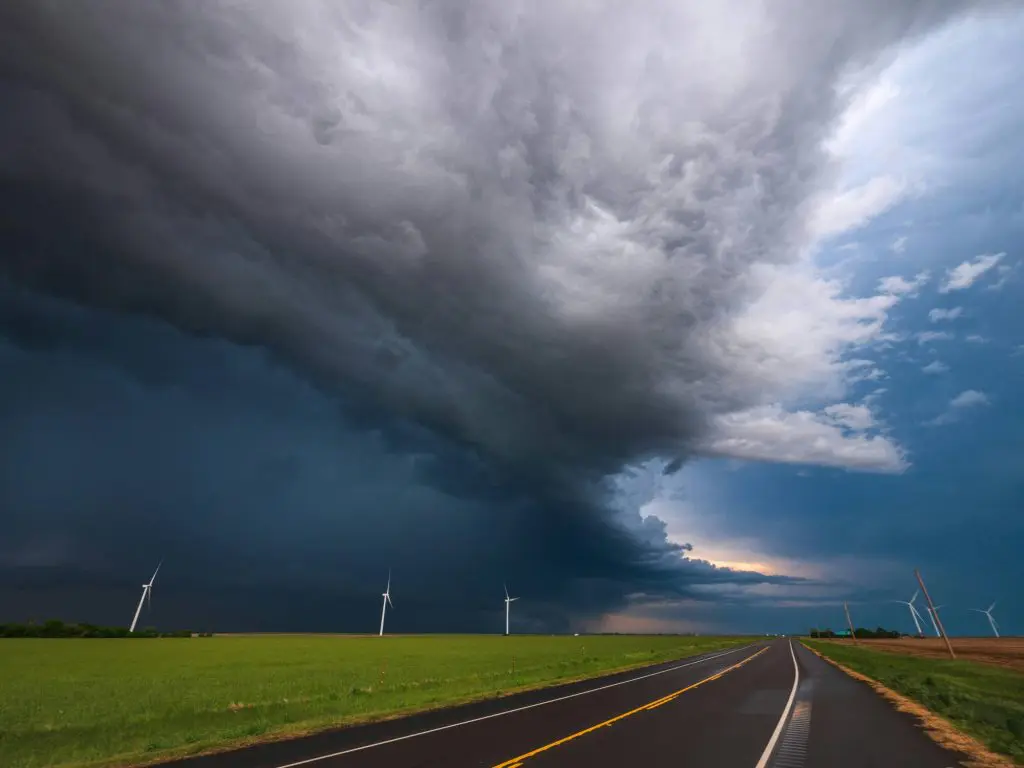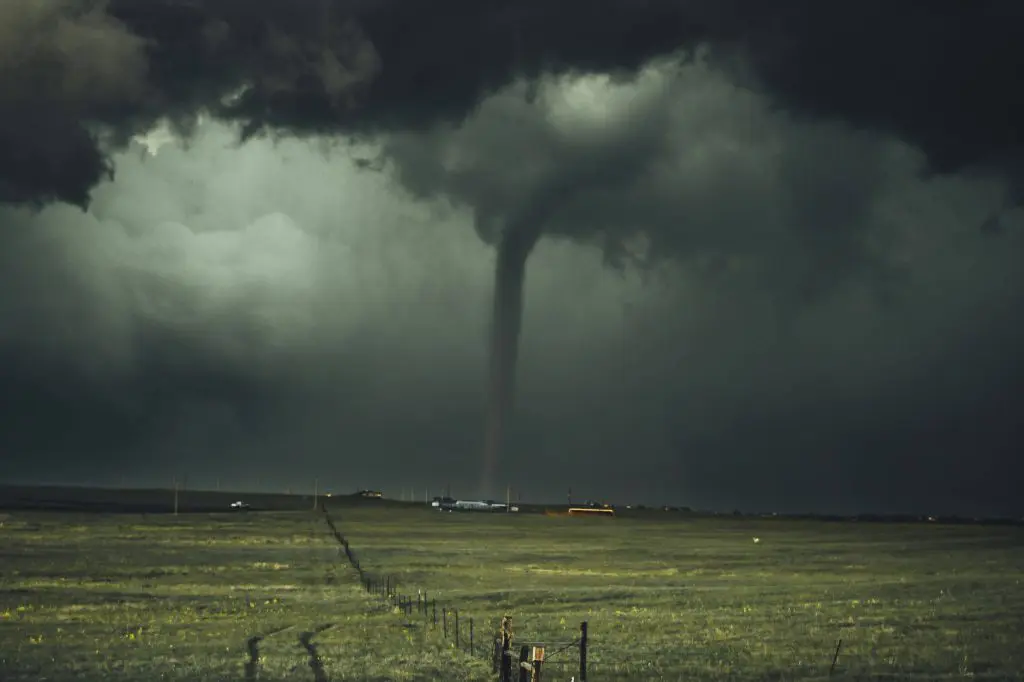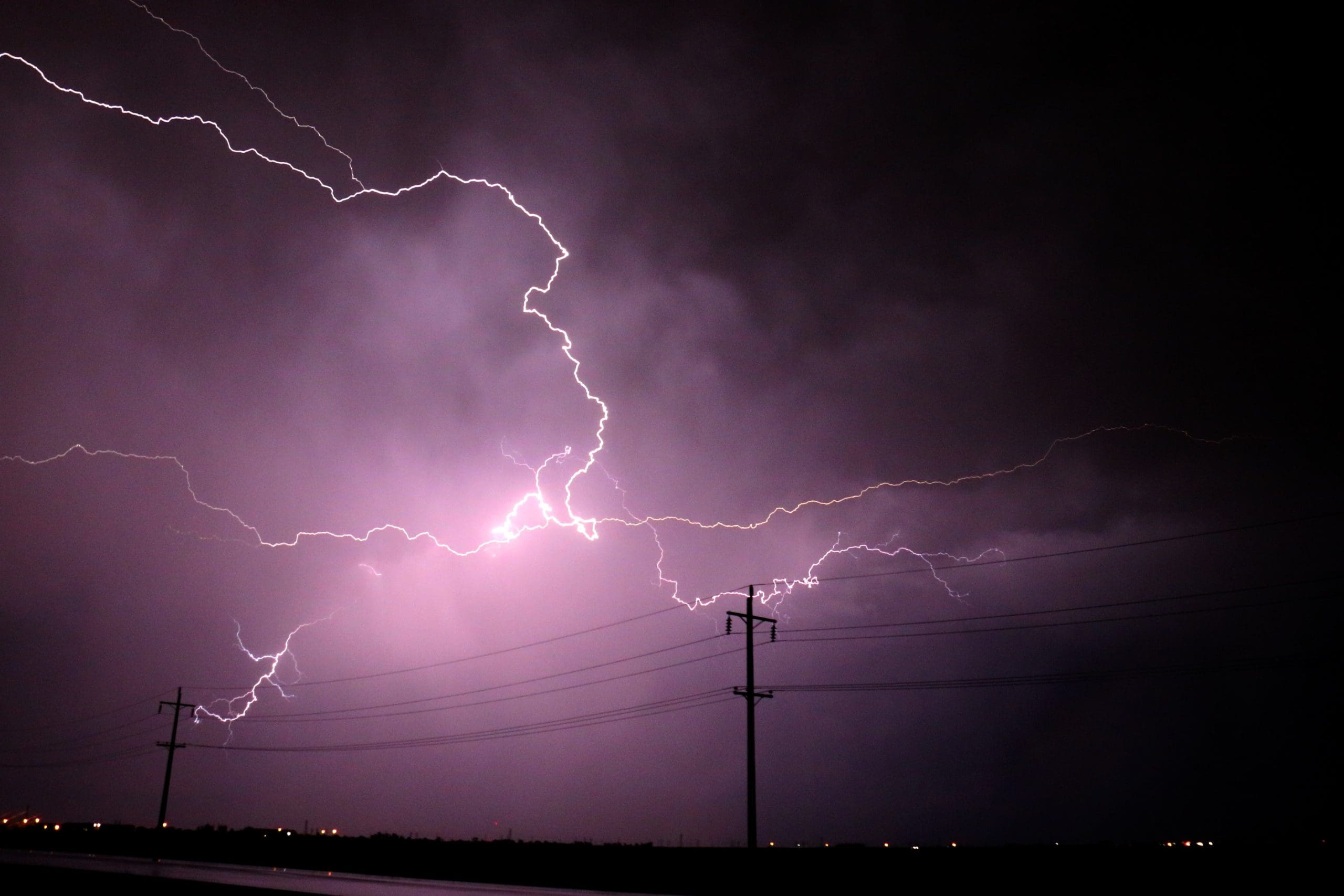Thunderstorms are dangerous storms that can produce powerful winds, create lightning and hail, and cause flash flooding and tornadoes.
The National Weather Service defines a severe thunderstorm as storms capable of producing hail that is an inch or larger or wind gusts over 58 mph.
Terms Used During a Thunderstorm

Severe Thunderstorm Watch
Severe thunderstorms are possible in and near your area. This is the time to be informed and prepared for when a severe thunderstorm warning is issued.

Severe Thunderstorm Warning
Severe weather has been reported by spotters or indicated on radar. Now is the time to take action and take shelter in a substantial building.

Considerable Damage Threat
When there is at least 1.75-inch diameter (golf ball-sized) hail and/or 70 mph thunderstorm winds. This will not activate a Wireless Emergency Alert on smartphones.

Destructive Damage Threat
When there is at least 2.75-inch diameter (baseball-sized) hail and/or 80 mph thunderstorm winds. Warnings with this tag will activate a Wireless Emergency Alert on smartphones within the warned area.
Thunderstorm Threats
Lightning
It is one of the biggest dangers associated with thunderstorms. Lightning can occur at any time of day and at any time of year. According to the National Weather Service, lightning can strike 20 miles away from the parent thunderstorm. Most lightning deaths and injuries occur when people are caught outdoors. If lightning hits someone, they need prompt medical attention.
Hail
It is solid ice formed inside thunderstorm updrafts and can damage aircrafts, homes, cars and be deadly to people and animals. Many times, the size of hailstones are compared to common objects, most range in size from a 1/8 inch (BB-size) to 4.5 inches (grapefruit).
Flash Flooding
A flash flood is caused by heavy or excessive rainfall in a short period of time. They can occur within minutes or a few hours of excessive rainfall. Areas damaged by wildfires are particularly susceptible to flash floods and debris flows during rainstorms.
Some types of damaging winds include:
- Straight-line wind. Mainly used to define any thunderstorm wind not associated with rotation.
- Macroburst. Winds that begin over a smaller area then spread out to a wider area, sometimes producing similar damage to a tornado. These can also be associated with showers to weak to produce thunder.
- Microburst. These are small and short-lived, lasting only five to ten minutes with maximum windspeeds exceeding 100 mph.
- Derecho. A widespread, long lived wind storm. The wind damage swath extends more than 240 miles and includes wind gusts of at least 58 mph.
Protecting Yourself…
…Before a Thunderstorm
- Know your risk. Know your area’s risk for thunderstorms. On average, the number of days per year with thunderstorms in Wisconsin ranges from 30 to 40, according to the National Weather Service.
- Be informed. Make sure your smartphone is set to receive Wireless Emergency Alerts for severe weather. Have a National Oceanic and Atmospheric Administration (NOAA) Weather radio that can alert you to weather conditions in your area. Sign up for community alerts.
- Strengthen your home. Cut down trees that may be in danger of falling on your home. Trim trees and branches. Secure loose objects that may blow away, close windows and doors, and move any valuable objects inside or under a sturdy structure. Have whole-house surge protectors to protect your appliances.
- Make a plan. Create an emergency plan so that you and your family know what to do, where to go, and what you will need to protect yourselves from the effects of a thunderstorm. Identify a safe spot and/or sturdy buildings close to where you live, work, study, and play.
…During a Thunderstorm
- Get updates. Use a battery-operated NOAA Weather Radio for updates from local officials. Smartphones are safe to use.
- Tips for when you are…
- At home:
- Stay away from windows. Damaging wind or hail may be approaching.
- Avoid water. Do not bathe, shower, wash dishes, or have any other contact with water because lightning can travel through a building’s plumbing.
- Do not lie on concrete floors or lean against concrete walls.
- Avoid electronic equipment. Do not use computers, gaming systems, or anything connected to an electrical outlet. Use landline phones only in an emergency. Lightning can travel through electrical systems and telephone lines.
- While driving:
- Stay inside your hard-topped metal vehicle, but do not touch anything metal inside of your car. This includes the radio, cell phone chargers, mobile GPS devices, door handles, and the steering wheel.
- If needed, seek alternative shelter. Convertibles, Jeeps, or other open or soft-topped vehicles do not provide as much protection.
- Avoid flooded roadways. Turn around, Don’t drown! Just six inches of fast-moving water can knock you down, and one foot of moving water can sweep your vehicle away.
- While outside:
- When thunder roars, go indoors! If you can hear thunder, you are close enough to the storm to be struck by lightning. Find shelter in a sturdy building or car. DO NOT take shelter in small sheds, in a structure with exposed sides, or baseball dugouts. Stay in place for 30 minutes after the last clap of thunder.
- There is NO safe place outside during a thunderstorm. If you absolutely cannot get indoors to safety, you can slightly lessen the threat of being struck with the following tips.
- In a forest: Seek shelter in a low area under a thick growth of small trees. Do not stand near isolated trees.
- In an open or elevated area: Go to a low place such as a ravine or valley. Be alert for flash floods.
- On open water: Get to land and away from bodies of water.
- Never use a cliff or rocky overhang for a shelter.
- Get away from objects that may conduct electricity. Barbed wire fences, power lines, windmills, etc.
- At home:
…After a Thunderstorm
- Stay informed. Pay attention to authorities and weather forecasts for information on whether it is safe to go outside and instructions for possible flash flooding.
- Be aware. Watch for fallen power lines and trees. Report them immediately. Stay out of damaged buildings.
- Contact loved ones. Let family and friends know that you’re okay. Text messages and social media are more reliable forms of communication than phone calls. Mobile phone calls can overwhelm provider capacity during an emergency.
- Help neighbors. If you come across people that are injured and you are properly trained, you can provide first aid to victims until emergency response teams arrive.
- Use caution when hiring contractors to repair storm damage.

